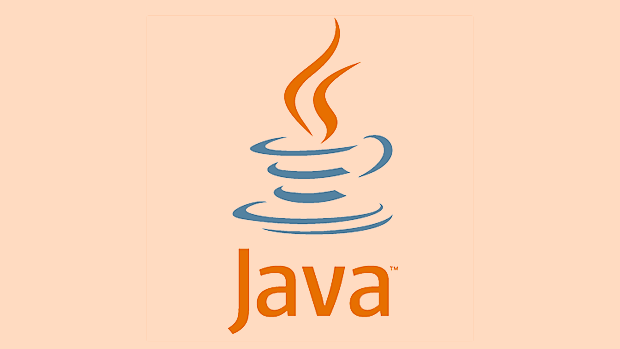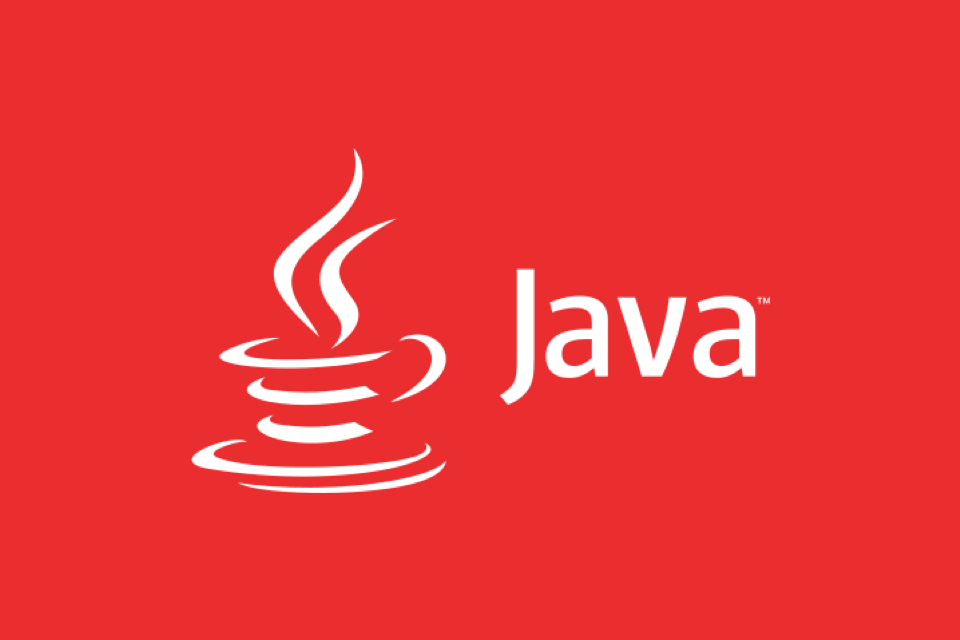Advanced Java Concurrency and Multithreading Patterns
Jul 29, 2025 am 02:28 AMThreadPoolExecutor should be used to manually configure thread pools, select bounded queues, appropriate rejection policies, and name threads to avoid OOM and facilitate troubleshooting; 2. Use CompletableFuture to realize chain orchestration and combination of asynchronous tasks, improve asynchronous processing capabilities through thenCombine, allOf, and other methods, and specify a custom thread pool to avoid using public pools; 3. Use Phaser to replace CountDownLatch and CyclicBarrier, because it supports dynamic registration, multi-stage synchronization and participant logout, which is suitable for complex synchronization scenarios; 4. Use ReentrantReadWriteLock in read and write scenarios to improve concurrency performance, pay attention to the order of obtaining and releasing read and write locks; 5. It is recommended to use StampedLock for extreme read and write scenarios The optimistic reading mode of the system improves performance through tryOptimisticRead and validate, but it should be noted that it is not reentered and cannot be mixed with synchronized; 6. Use ThreadLocal to implement thread-local storage, suitable for isolation and contextual delivery of non-threadsafe objects. Be sure to call remove() after use to prevent memory leakage; 7. Use Disruptor to replace BlockingQueue in high-throughput scenarios such as financial transactions, and implement low-latency, high-throughput event processing based on ring buffers and lock-free designs. Events, factories and processors need to be defined and appropriate policies are configured. These modes need to be selected and used according to the actual scenario to effectively improve system performance and stability.

Java's concurrency and multi-threaded programming are the key to building high-performance and scalable applications. As modern applications have increasingly demanded responsiveness, throughput, and resource utilization, mastering advanced concurrency patterns has become particularly important. This article will explore in-depth several advanced Java concurrency and multithreading patterns that are very useful in actual development, helping you write more robust and efficient concurrent code.

1. Reasonable use and customization of thread pools (ThreadPoolExecutor advanced configuration)
Although Executors tool class provides convenient ways to create thread pools, using newFixedThreadPool or newCachedThreadPool directly in production environments can easily cause problems (such as OOM). It is also recommended to use ThreadPoolExecutor to configure manually.
ThreadPoolExecutor executor = new ThreadPoolExecutor(
5, // The number of core threads is 10, // The maximum number of threads is 60L, // Idle thread survival time TimeUnit.SECONDS,
new LinkedBlockingQueue<>(100), // Task Queue new CustomThreadFactory(), // Thread Factory (nameable threads)
new ThreadPoolExecutor.CallerRunsPolicy() // Denied policy);Key points:

- Queue selection :
ArrayBlockingQueue(bounded) is safer thanLinkedBlockingQueue(default unbounded). - Rejection policy :
-
AbortPolicy: throw exception (default) -
CallerRunsPolicy: executed by the thread that submits the task (to prevent avalanches)
-
- Thread naming : Set meaningful thread names through
ThreadFactoryto facilitate troubleshooting.
2. CompleteFuture implements asynchronous orchestration
CompletableFuture is a powerful asynchronous programming tool introduced by Java 8, supporting chain calls and combining multiple asynchronous tasks.
CompleteFuture<String> future1 = CompleteFuture.supplyAsync(() -> {
// Simulation time-consuming operation sleep(1000);
return "Result1";
});
CompleteFuture<String> future2 = CompleteFuture.supplyAsync(() -> {
sleep(800);
return "Result2";
});
// Combined two tasks CompletableFuture<String> combined = future1.thenCombine(future2, (r1, r2) -> r1 "-" r2);
combined.thenAccept(System.out::println).join();Common methods:

-
thenApply(): Convert the result -
thenCompose(): Serial asynchronous task (flatMap semantics) -
allOf()/anyOf(): Multiple tasks are synchronized or any completed - Custom thread pool: Avoid using
ForkJoinPool.commonPool()
CompletableFuture.supplyAsync(() -> compute(), executor);
3. Use Phaser to replace CountDownLatch and CyclicBarrier
Phaser is a more flexible synchronization tool that supports dynamic registration of participants, reusable, and phased.
Phaser phaser = new Phaser();
phaser.register(); // The main thread also participates for (int i = 0; i < 3; i ) {
phaser.register();
new Thread(() -> {
System.out.println(Thread.currentThread().getName() "Start the first stage");
phaser.arriveAndAwaitAdvance(); // Wait for everyone to arrive at System.out.println(Thread.currentThread().getName() "Start the second stage");
phaser.arriveAndAwaitAdvance();
phaser.arriveAndDeregister(); // Complete and log out}).start();
}
phaser.arriveAndDeregister(); // The main thread exitsAdvantages:
- Dynamic addition and decrease participation threads
- Supports multi-stage synchronization
- You can listen for the beginning and end of each phase (via
onAdvance())
4. Use ReadWriteLock to optimize read more and write less scenarios
In scenarios with high concurrent reading and low frequency writing, ReentrantReadWriteLock can significantly improve performance.
public class Cache {
private final Map<String, String> map = new HashMap<>();
private final ReadWriteLock lock = new ReentrantReadWriteLock();
private final Lock readLock = lock.readLock();
private final Lock writeLock = lock.writeLock();
public String get(String key) {
readLock.lock();
try {
return map.get(key);
} finally {
readLock.unlock();
}
}
public void put(String key, String value) {
writeLock.lock();
try {
map.put(key, value);
} finally {
writeLock.unlock();
}
}
}Notice:
- Read locks are not mutually exclusive, write locks are exclusive
- Cannot re-enter the write lock to the read lock (it will be deadlocked), it needs to be explicitly released before obtaining
- JDK 17 Recommended to consider
StampedLock(Optimistic Reading)
5. StampedLock: High-performance read and write lock (optimistic lock mode)
StampedLock provides three modes: write lock, pessimistic reading lock, and optimistic reading lock , which is suitable for scenarios where more reads, less writes.
public class Point {
private double x, y;
private final StampedLock sl = new StampedLock();
public double distanceFromOrigin() {
long stamp = sl.tryOptimisticRead(); // Optimistic read double currentX = x, currentY = y;
if (!sl.validate(stamp)) { // Check whether there is a write operation during the checking period stamp = sl.readLock(); // Upgrade to pessimistic reading try {
currentX = x;
currentY = y;
} finally {
sl.unlockRead(stamp);
}
}
return Math.sqrt(currentX * currentX currentY * currentY);
}
}advantage:
- Optimistic reading and writing without blocking, extremely high performance
- High priority for writing operations
shortcoming:
- Do not reenter
- Can't be mixed with
synchronized - The lock status is managed through
long stamp, and you need to be careful when using it.
6. Concurrent design pattern: Thread-Local Storage and object pool
ThreadLocal usage scenarios
private static final ThreadLocal<SimpleDateFormat> formatter = ThreadLocal.withInitial(
() -> new SimpleDateFormat("yyyy-MM-dd")
);
public String formatDate(Date date) {
return formatter.get().format(date);
}Applicable to:
- Isolation of non-thread-safe tool classes (such as
SimpleDateFormat) - Context delivery (such as user identity, request ID)
Note memory leaks:
-
ThreadLocal'sEntryisWeakReference, but the value may still leak - It is recommended to call
remove()after using it
formatter.remove();
7. Use Disruptor to implement high-performance event queues (replace BlockingQueue)
In ultra-high throughput scenarios (such as financial transactions, log systems), Disruptor performs better than BlockingQueue , based on ring buffers and lock-free design.
Basic usage steps:
- Define event classes
- Create an event factory
- Define event handler (EventHandler)
- Build a Disruptor instance and start
Disruptor<LongEvent> disruptor = new Disruptor<>(
LongEvent::new,
bufferSize,
Executors.defaultThreadFactory(),
ProducerType.MULTI,
new BlockingWaitStrategy()
);Advantages:
- Lockless producer/consumer
- High throughput, low latency
- Preallocate objects to reduce GC
Basically that's it. These advanced concurrency modes can significantly improve the stability and performance of the system in actual projects. The key is not to pile up techniques, but to choose the right tools based on the scene:
- Generally, asynchronous use of
CompletableFuture -
StampedLockfor high concurrent reading -
Phaserfor multi-stage synchronization - High throughput queues consider
Disruptor
Not complicated, but it is easy to ignore details.
The above is the detailed content of Advanced Java Concurrency and Multithreading Patterns. For more information, please follow other related articles on the PHP Chinese website!

Hot AI Tools

Undress AI Tool
Undress images for free

Undresser.AI Undress
AI-powered app for creating realistic nude photos

AI Clothes Remover
Online AI tool for removing clothes from photos.

Clothoff.io
AI clothes remover

Video Face Swap
Swap faces in any video effortlessly with our completely free AI face swap tool!

Hot Article

Hot Tools

Notepad++7.3.1
Easy-to-use and free code editor

SublimeText3 Chinese version
Chinese version, very easy to use

Zend Studio 13.0.1
Powerful PHP integrated development environment

Dreamweaver CS6
Visual web development tools

SublimeText3 Mac version
God-level code editing software (SublimeText3)

Hot Topics
 A Developer's Guide to Maven for Java Project Management
Jul 30, 2025 am 02:41 AM
A Developer's Guide to Maven for Java Project Management
Jul 30, 2025 am 02:41 AM
Maven is a standard tool for Java project management and construction. The answer lies in the fact that it uses pom.xml to standardize project structure, dependency management, construction lifecycle automation and plug-in extensions; 1. Use pom.xml to define groupId, artifactId, version and dependencies; 2. Master core commands such as mvnclean, compile, test, package, install and deploy; 3. Use dependencyManagement and exclusions to manage dependency versions and conflicts; 4. Organize large applications through multi-module project structure and are managed uniformly by the parent POM; 5.
 Building RESTful APIs in Java with Jakarta EE
Jul 30, 2025 am 03:05 AM
Building RESTful APIs in Java with Jakarta EE
Jul 30, 2025 am 03:05 AM
SetupaMaven/GradleprojectwithJAX-RSdependencieslikeJersey;2.CreateaRESTresourceusingannotationssuchas@Pathand@GET;3.ConfiguretheapplicationviaApplicationsubclassorweb.xml;4.AddJacksonforJSONbindingbyincludingjersey-media-json-jackson;5.DeploytoaJakar
 css dark mode toggle example
Jul 30, 2025 am 05:28 AM
css dark mode toggle example
Jul 30, 2025 am 05:28 AM
First, use JavaScript to obtain the user system preferences and locally stored theme settings, and initialize the page theme; 1. The HTML structure contains a button to trigger topic switching; 2. CSS uses: root to define bright theme variables, .dark-mode class defines dark theme variables, and applies these variables through var(); 3. JavaScript detects prefers-color-scheme and reads localStorage to determine the initial theme; 4. Switch the dark-mode class on the html element when clicking the button, and saves the current state to localStorage; 5. All color changes are accompanied by 0.3 seconds transition animation to enhance the user
 Developing a Blockchain Application in Java
Jul 30, 2025 am 12:43 AM
Developing a Blockchain Application in Java
Jul 30, 2025 am 12:43 AM
Understand the core components of blockchain, including blocks, hashs, chain structures, consensus mechanisms and immutability; 2. Create a Block class that contains data, timestamps, previous hash and Nonce, and implement SHA-256 hash calculation and proof of work mining; 3. Build a Blockchain class to manage block lists, initialize the Genesis block, add new blocks and verify the integrity of the chain; 4. Write the main test blockchain, add transaction data blocks in turn and output chain status; 5. Optional enhancement functions include transaction support, P2P network, digital signature, RESTAPI and data persistence; 6. You can use Java blockchain libraries such as HyperledgerFabric, Web3J or Corda for production-level opening
 python property decorator example
Jul 30, 2025 am 02:17 AM
python property decorator example
Jul 30, 2025 am 02:17 AM
@property decorator is used to convert methods into properties to implement the reading, setting and deletion control of properties. 1. Basic usage: define read-only attributes through @property, such as area calculated based on radius and accessed directly; 2. Advanced usage: use @name.setter and @name.deleter to implement attribute assignment verification and deletion operations; 3. Practical application: perform data verification in setters, such as BankAccount to ensure that the balance is not negative; 4. Naming specification: internal variables are prefixed, property method names are consistent with attributes, and unified access control is used to improve code security and maintainability.
 How to use Java MessageDigest for hashing (MD5, SHA-256)?
Jul 30, 2025 am 02:58 AM
How to use Java MessageDigest for hashing (MD5, SHA-256)?
Jul 30, 2025 am 02:58 AM
To generate hash values using Java, it can be implemented through the MessageDigest class. 1. Get an instance of the specified algorithm, such as MD5 or SHA-256; 2. Call the .update() method to pass in the data to be encrypted; 3. Call the .digest() method to obtain a hash byte array; 4. Convert the byte array into a hexadecimal string for reading; for inputs such as large files, read in chunks and call .update() multiple times; it is recommended to use SHA-256 instead of MD5 or SHA-1 to ensure security.
 css dropdown menu example
Jul 30, 2025 am 05:36 AM
css dropdown menu example
Jul 30, 2025 am 05:36 AM
Yes, a common CSS drop-down menu can be implemented through pure HTML and CSS without JavaScript. 1. Use nested ul and li to build a menu structure; 2. Use the:hover pseudo-class to control the display and hiding of pull-down content; 3. Set position:relative for parent li, and the submenu is positioned using position:absolute; 4. The submenu defaults to display:none, which becomes display:block when hovered; 5. Multi-level pull-down can be achieved through nesting, combined with transition, and add fade-in animations, and adapted to mobile terminals with media queries. The entire solution is simple and does not require JavaScript support, which is suitable for large
 python parse date string example
Jul 30, 2025 am 03:32 AM
python parse date string example
Jul 30, 2025 am 03:32 AM
Use datetime.strptime() to convert date strings into datetime object. 1. Basic usage: parse "2023-10-05" as datetime object through "%Y-%m-%d"; 2. Supports multiple formats such as "%m/%d/%Y" to parse American dates, "%d/%m/%Y" to parse British dates, "%b%d,%Y%I:%M%p" to parse time with AM/PM; 3. Use dateutil.parser.parse() to automatically infer unknown formats; 4. Use .d






